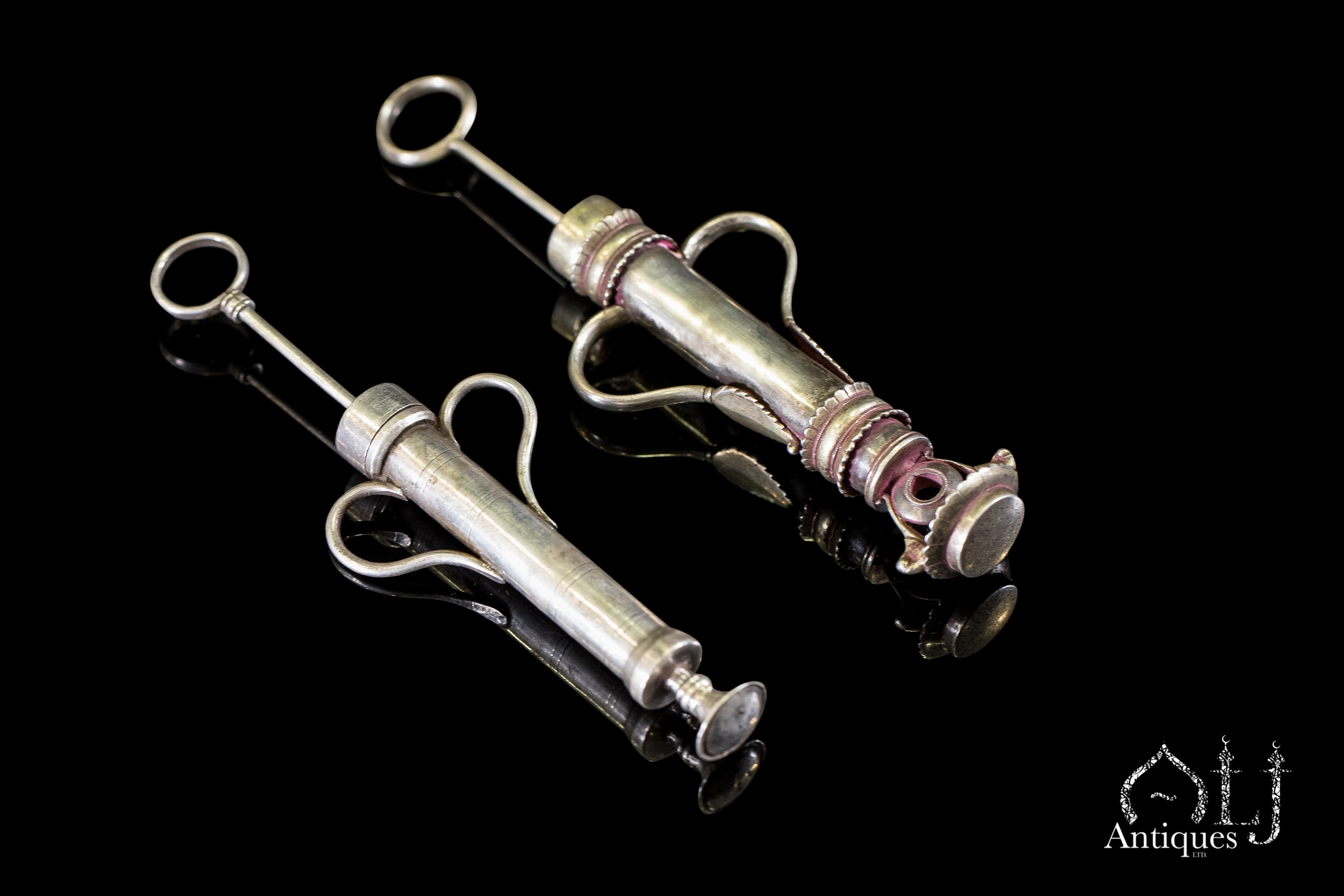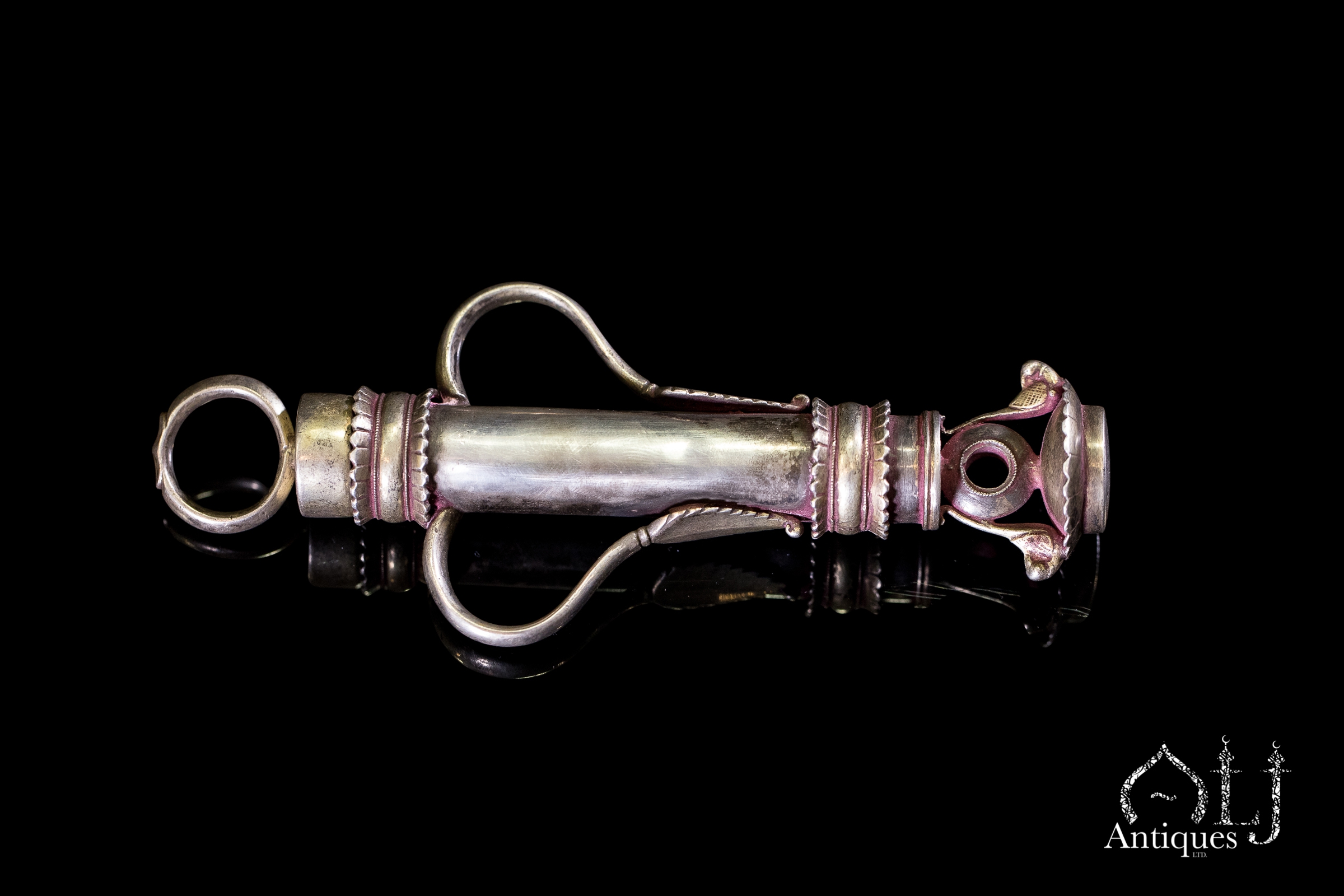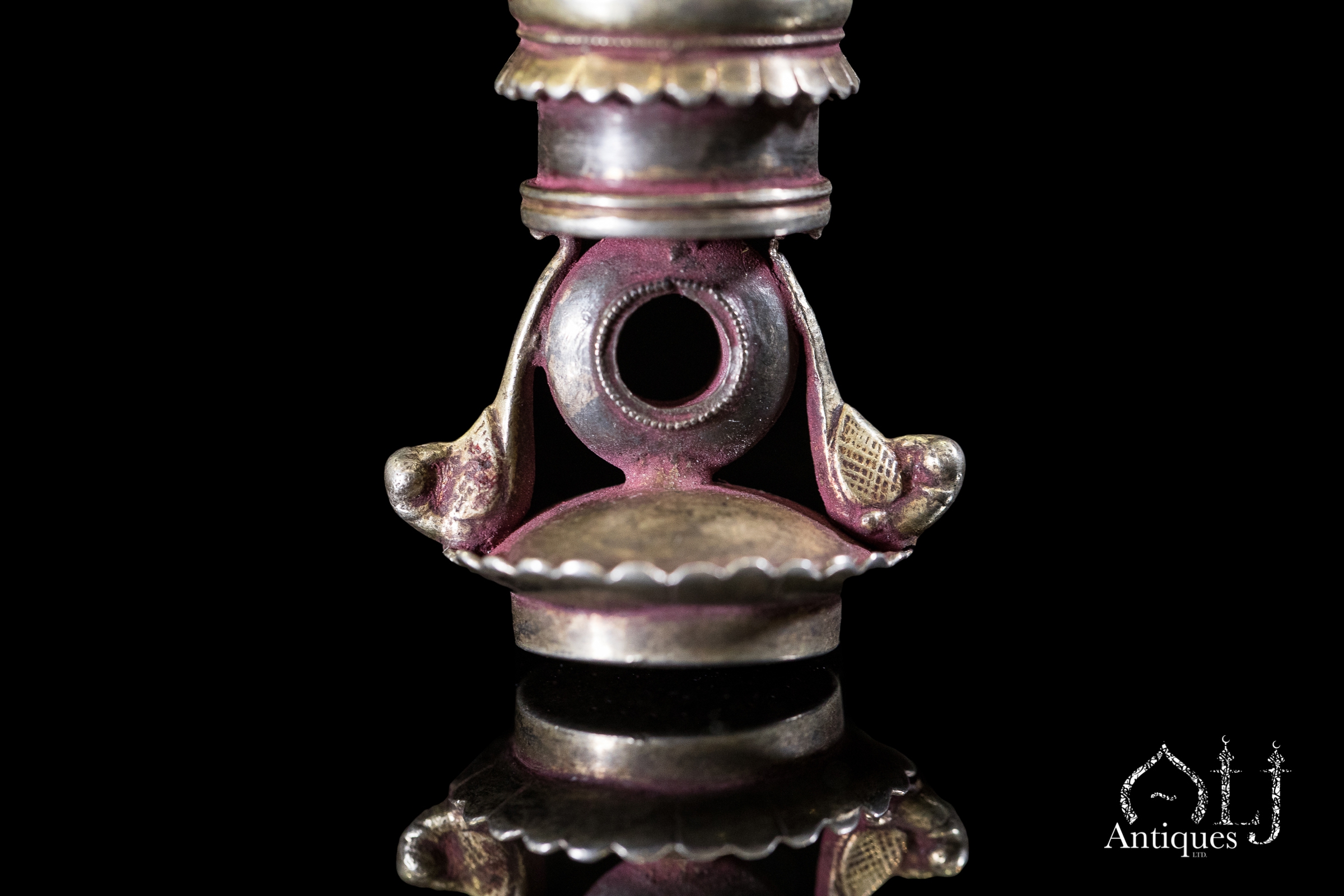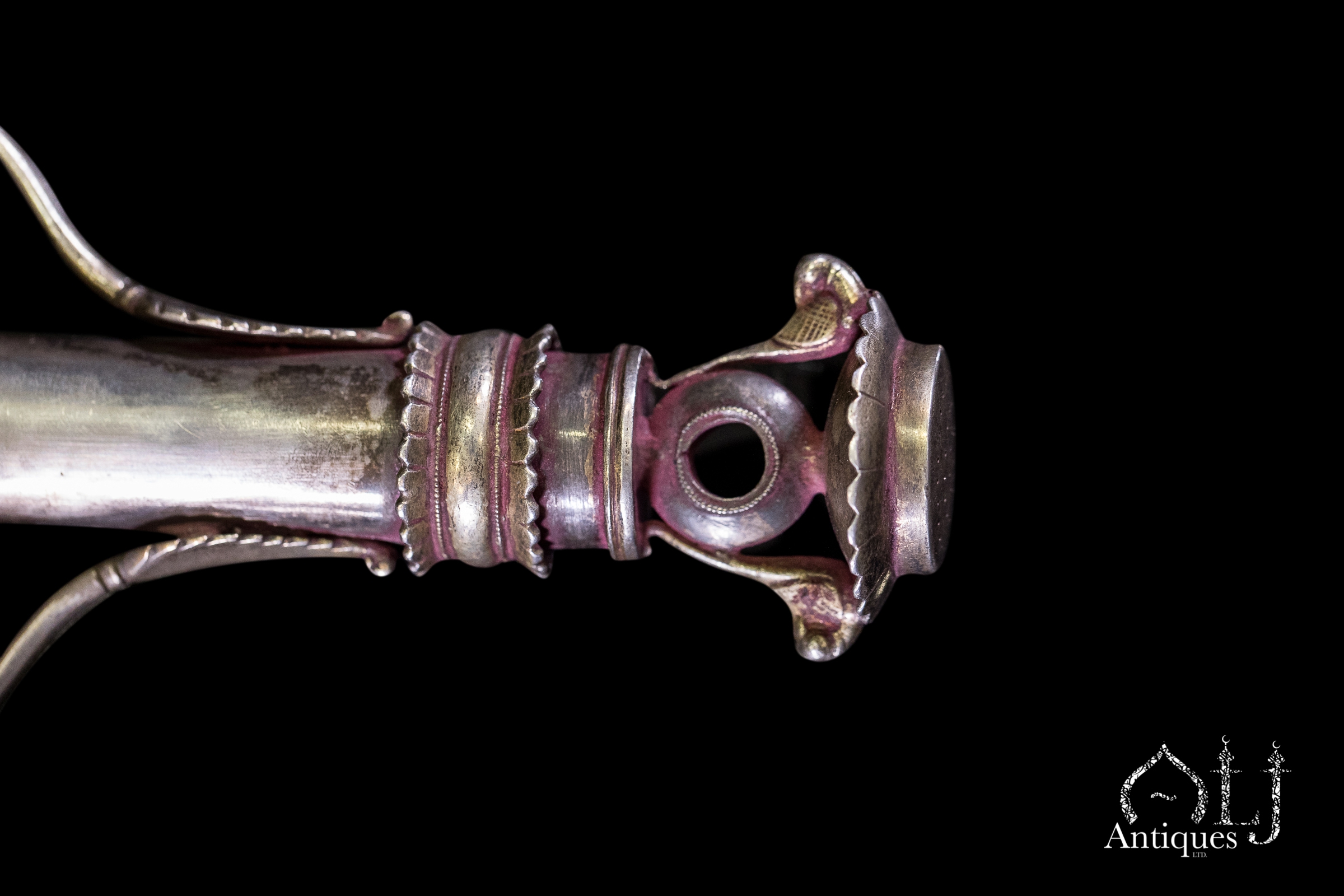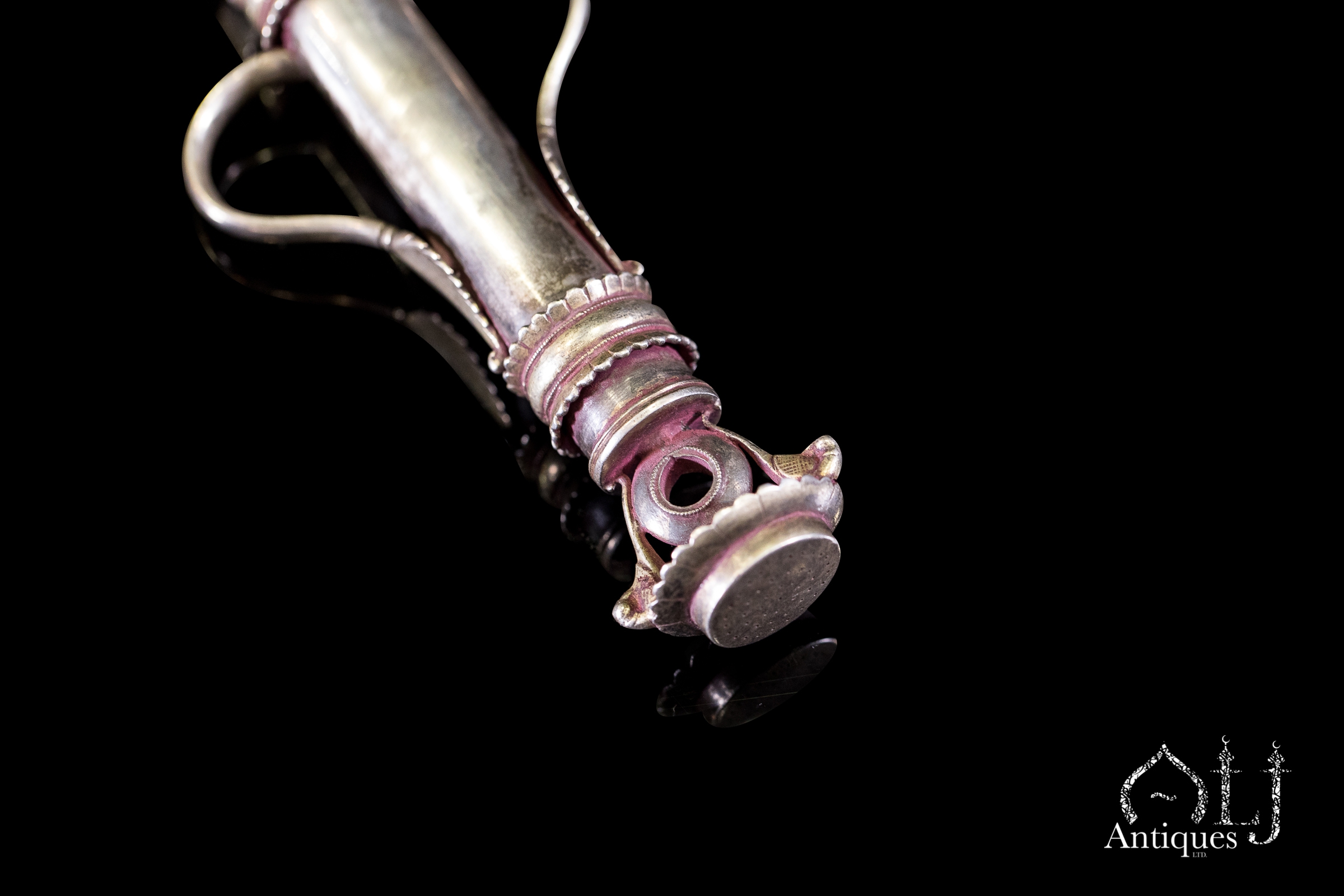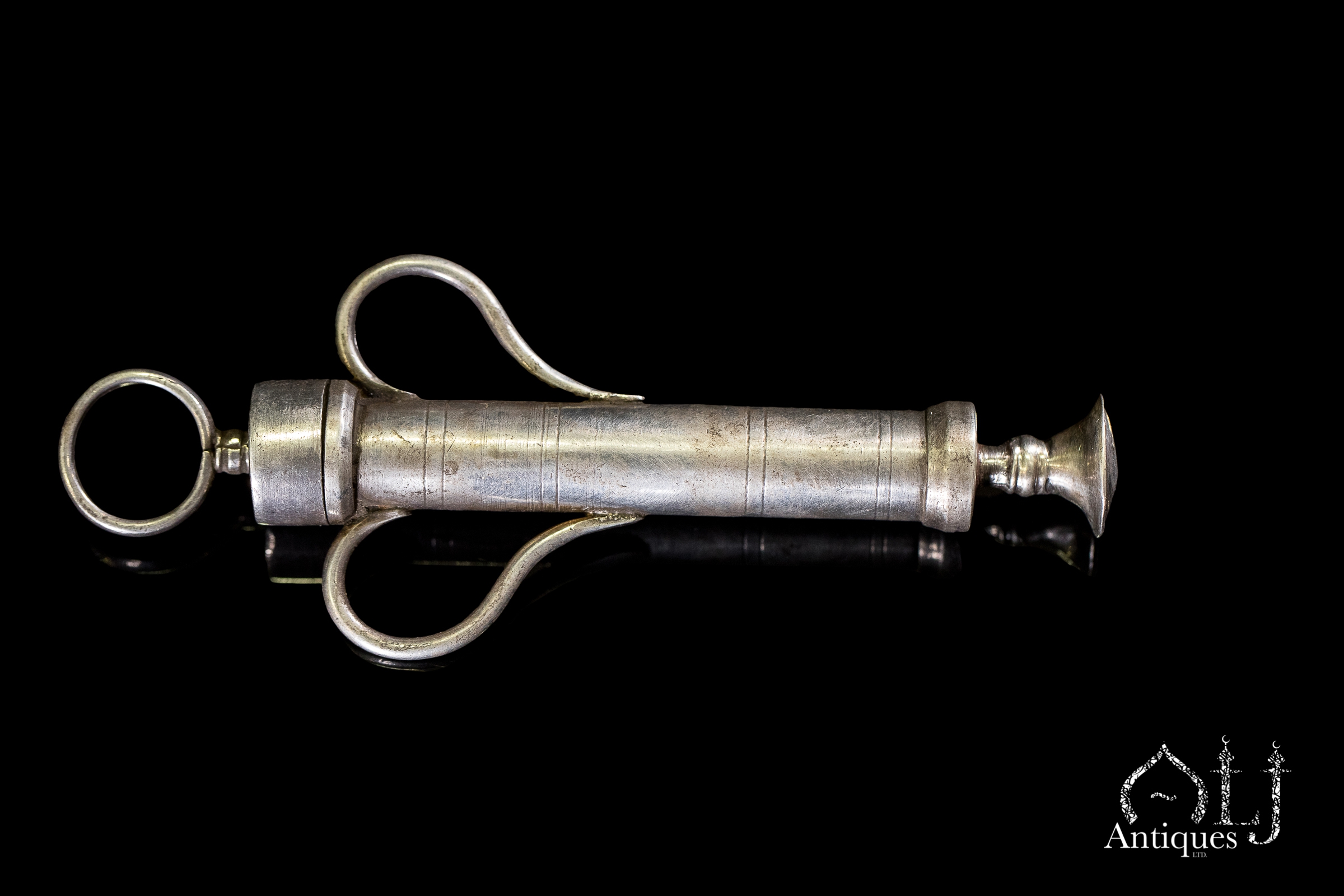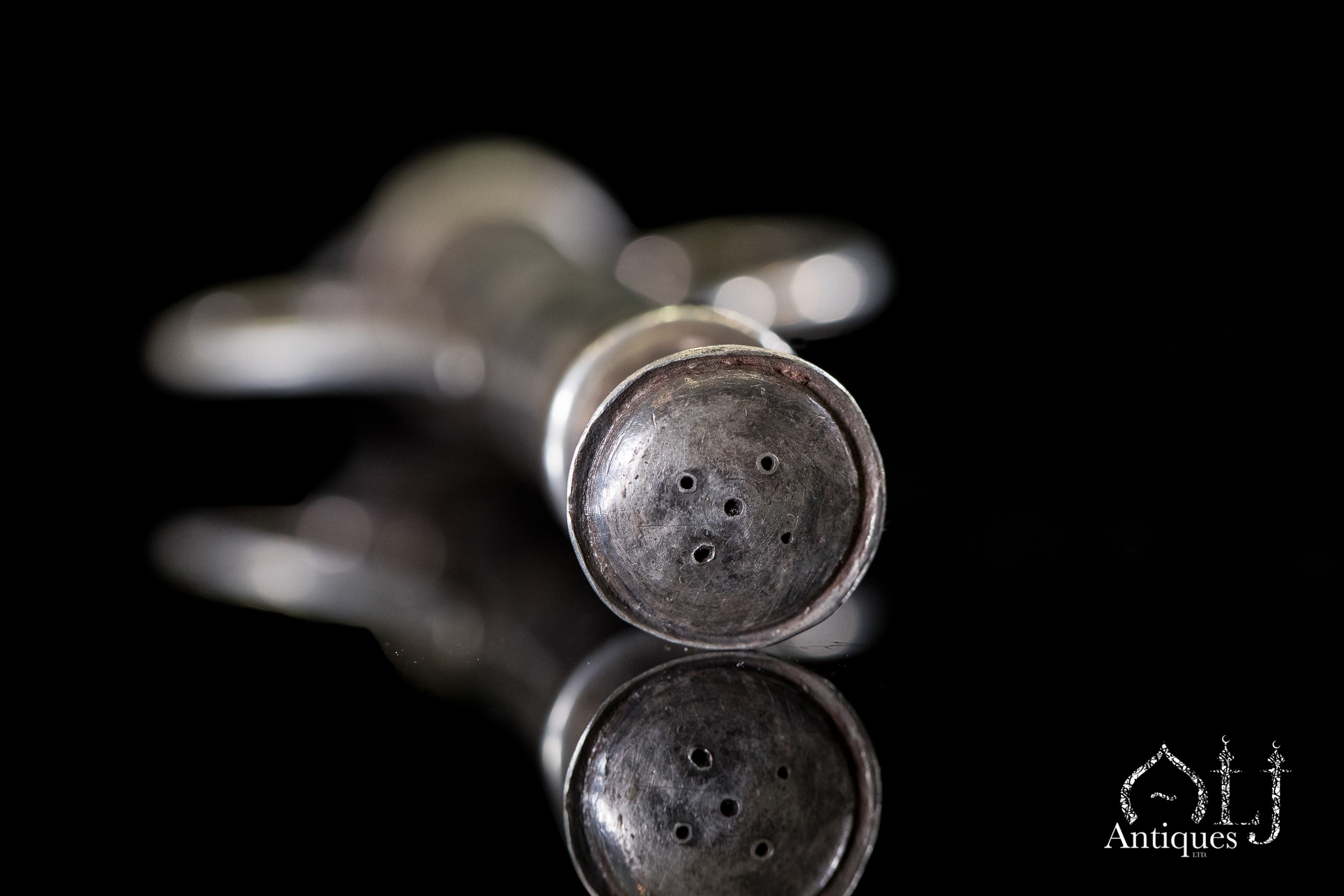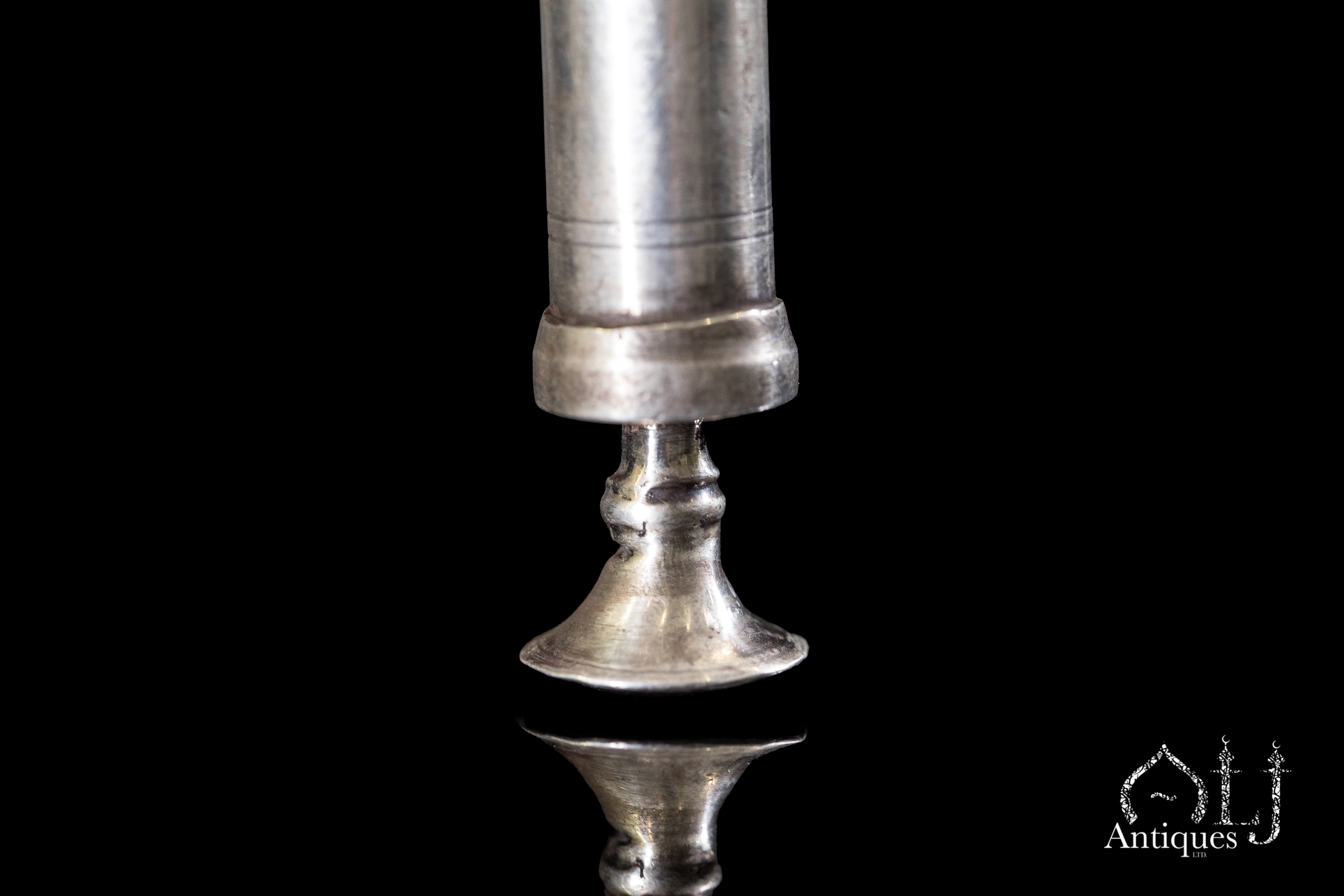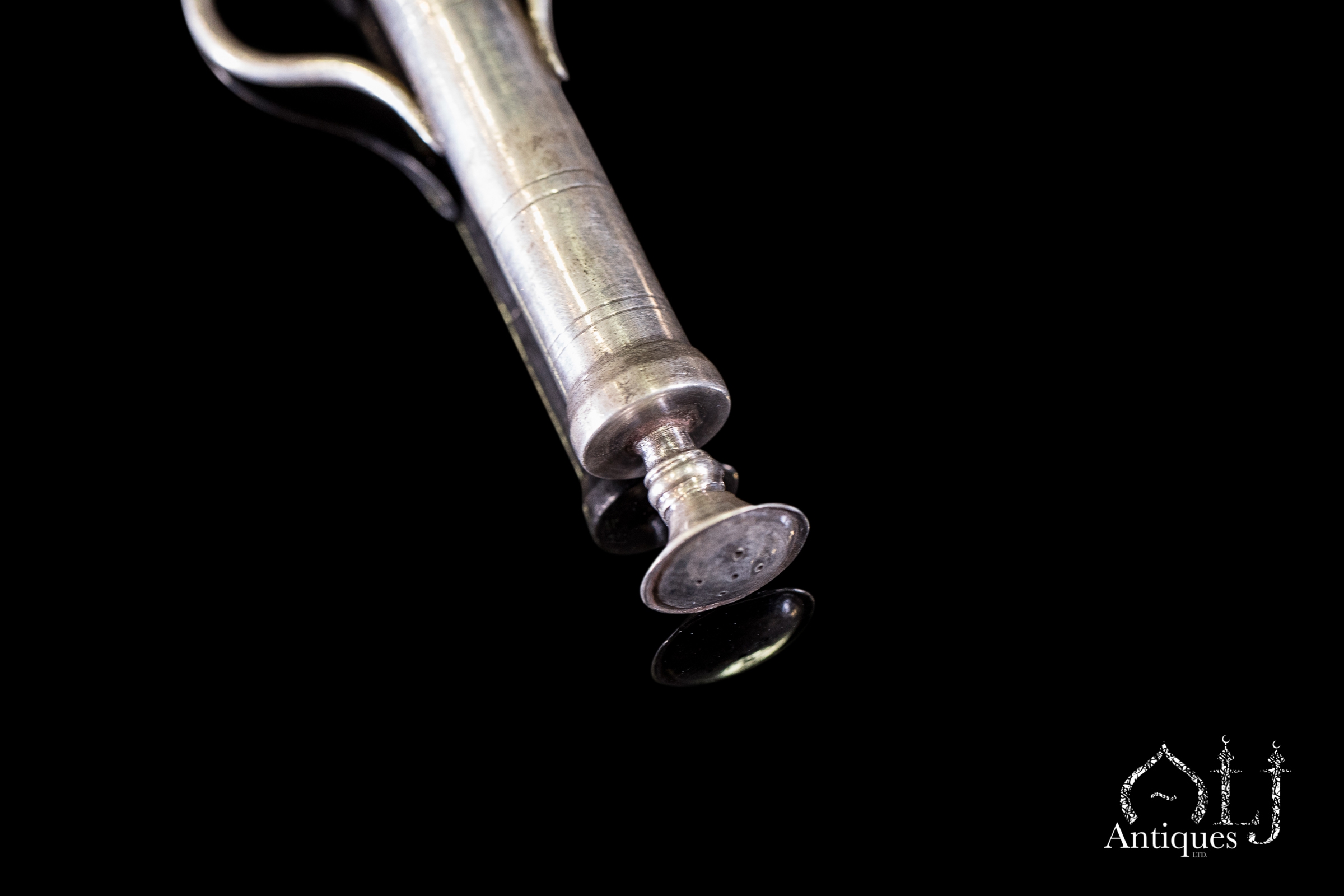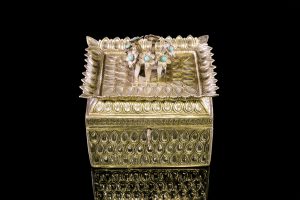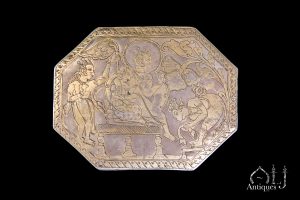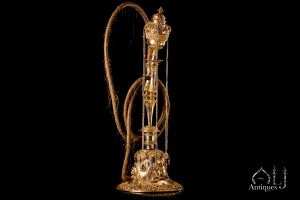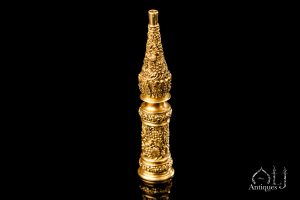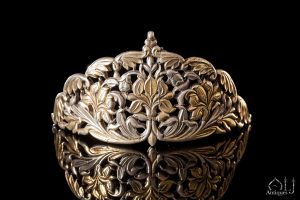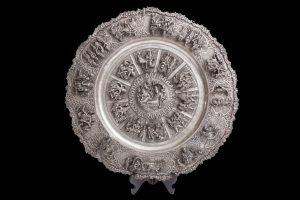Description
The lot is comprised of two fine silver water syringes, known in India as pichkari or piscara, and used in the festival of Holi.
Holi is one of the major religious festivities of South Asia, coincides with the spring and represents the destruction of demoness Holika by lord Krishna.
Traditionally bamboo syringes, were used by the gopis and cowherds to spay over each other have been filled with this coloured water, perfumed water, or powder (gulál) to participants— this powder could be made of rice flour mixed with turmeric or tesu flower or saffron.
Interestingly Holi was a tradition that survived and was assimilated by the ruling class of Mughal India.
While originally pichkari were made of bamboo, those for the royalty and upper classes were obviously being fashioned of gold and silver.
In our lot, one of the sprinklers is long silver tube terminating in a lotus papyrus-type head and nozzle that is perforated with many fine holes.
The tube is engraved following a linear pattern. Two curved handles secure the tube, and the internal plunger has a fine silver handle to help to propel the water out of the nozzle.
The other example retains the same basic shape but is more profusely decorated with bands of petals and recurring palmettes issuing from the top the spraying finial of flaring form, with applied finger loops worked as curling fern leaves.
The sides of the cylinder have twin scrolling side handles that curve around and finish with parakeet head-like terminals, Both birds are covered with Tekka powder.
Several similar silver holi syringes are illustrated in Terlinden or kept in museums around the world, like the Victoria and Albert.
These silver holi syringes are attributed to Rajasthan.
Holi Festival in the court at Nurpur, in the Himachal Pradesh, North India, around 1775. The Victoria & Albert Museum.

